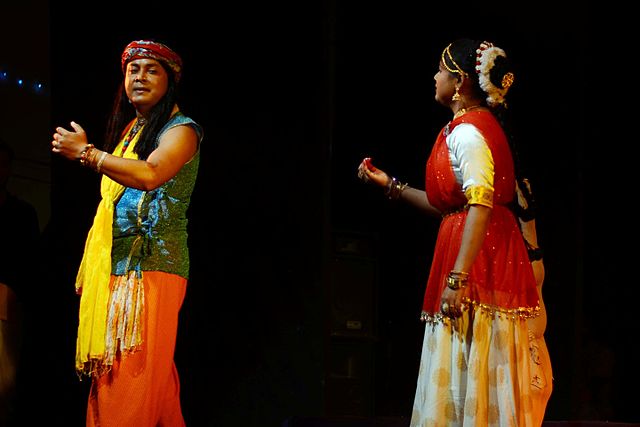The culture of Assam is traditionally a hybrid one, developed due to cultural assimilation of different ethno-cultural groups under various political-economic systems in different periods of its history.
Actors of Abinaswar Gosthi performs the play"Surjya Mandirot Surjyasta"
17th century pleasure boat (Mayurpokhyi khel-nao) of medieval Assam. A great example of Assamese wood craftsmanship.
Khol badan during Ankiya Bhaona
Dunori from Assam.
Srimanta Sankardev was a 15th–16th century Assamese polymath; a saint-scholar, poet, playwright, dancer, actor, musician, artist social-religious reformer and a figure of importance in the cultural and religious history of the Bhakti movement in Assam. He is credited with building on past cultural relics and devising new forms of music (Borgeet), theatrical performance, dance (Sattriya), literary language (Brajavali). Besides, he has left a literary oeuvre of trans-created scriptures, poetry and theological works written in Sanskrit, Assamese and Brajavali. The Bhagavatic religious movement he started, Ekasarana Dharma and also called Neo-Vaishnavite movement, influenced two medieval kingdoms – Koch and the Ahom kingdom – and the assembly of devotees he initiated evolved over time into monastic centers called Sattras, which continue to be important socio-religious institutions in Assam and to a lesser extent in North Bengal.

Imaginary portrait of Srimanta Sankardev by Bishnu Prasad Rabha
Xutradhar in Assamese Bhaona
Vrindavani vastra (fragment), circa 1570, at LACMA






